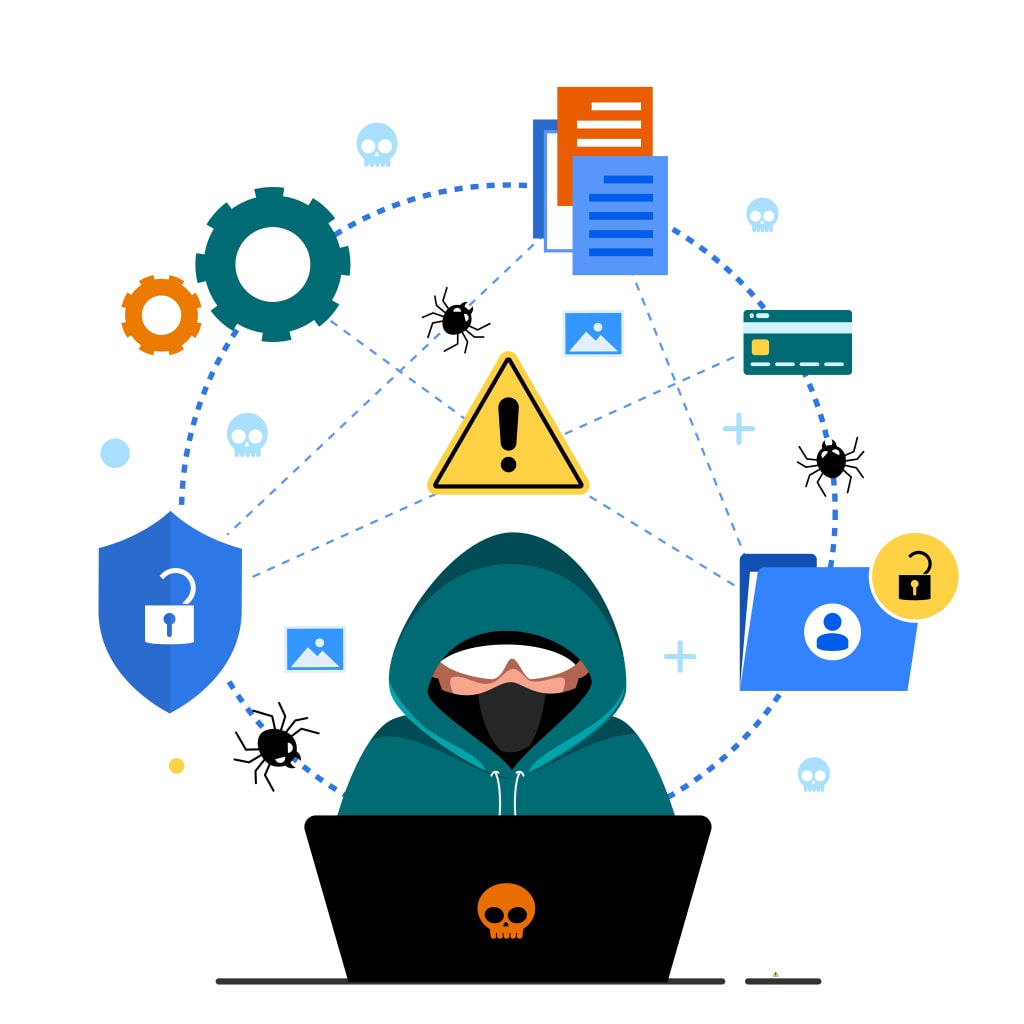Navigating the Metaverse:
Understanding the Cyber Risks

Are you ready to explore the metaverse, the vast virtual world where we can live, work and play? As technology advances rapidly, more of us are spending time online than ever before. However, with this new digital frontier comes a new set of risks that we need to be aware of. Cybersecurity is more important now than ever before- from phishing scams to data breaches and cyber-attacks- it's essential to stay protected to fully enjoy all that the metaverse has to offer. In this post, we'll dive deep into understanding cyber risk and show you how you can stay safe online while navigating through the exciting world of the metaverse.
What is the Metaverse?
The Metaverse is a term used to describe the virtual reality environment created by the convergence of real-time 3D technologies, networks, and data. It is a simulation of the physical world that allows users to interact with each other and with digital objects in a realistic way. The Metaverse can be used for business, education, entertainment, or any other purpose where people need to interact in a virtual environment.
The term was first coined by Neal Stephenson in his science fiction novel Snow Crash, which described a future world where people spent most of their time in a virtual reality environment called the Metaverse. The concept has been popularized by the film Ready Player One and the video game series Sword Art Online.
While the Metaverse offers many benefits, there are also some risks associated with it. These include cybercrime, identity theft, fraud, and privacy concerns. As more people and businesses use the Metaverse, it is important to be aware of these risks and take steps to protect yourself from them.
Types of Cyber Risks in the Metaverse
There are many potential cyber risks associated with the Metaverse. Here are some of the most common:
1. Identity theft and fraud: criminals can use the Metaverse to steal personal information or commit fraud.
2. malware and viruses: malicious software can be used to infect your computer or damage data.
3. phishing: scammers can use the Metaverse to try to trick you into giving them sensitive information, such as passwords or credit card numbers.
4. spoofing: hackers can use the Metaverse to impersonate you or another user to gain access to your account or data.
5. denial of service attacks: attackers can attempt to overload servers or networks to prevent legitimate users from accessing them.
6. data breaches: hackers can gain unauthorized access to systems and databases, resulting in the exposure of confidential information.
How to Recognize and Avoid Cyber Risks in the Metaverse
The internet has provided a new playground for criminals, and the Metaverse is no exception. Cyber risks in the Metaverse can take many forms, from identity theft and fraud to cyberbullying and stalking. While the Metaverse offers many benefits, it’s important to be aware of these risks and take steps to protect yourself.
Here are some tips for recognizing and avoiding cyber risks in the Metaverse:
1. Be aware of the information you share online. Be careful about sharing personal information, such as your address, phone number, or credit card details. Only share this information with people you trust.
2. Be cautious about whom you meet online. Not everyone is whom they say they are. If someone you meet online asks for personal information or money, be suspicious.
3. Keep your software up to date. Install security updates for your operating system and applications as soon as they become available. This will help protect your computer from malware and other threats.
4. Use strong passwords. Create passwords that are at least eight characters long and include a mix of upper- and lowercase letters, numbers, and symbols. Avoid using easily guessed words like “password” or your birthdate.
5. Don’t click on links from unknown sources. Be wary of emails or messages that contain links to websites you don’t recognize.
Effects of Cyber Risks on Individuals, Businesses and Governments
Cyber risks can have a variety of negative effects on individuals, businesses, and governments. Individuals may have their personal information stolen or leaked, their accounts hacked, or be subject to identity theft or fraud. Businesses may suffer financial losses, damage to their reputation, or loss of customer data. Governments may be the target of cyber-attacks that could disrupt critical services, leak sensitive information, or cause other damage.
Cyber risks are a growing concern for everyone who uses the internet. It’s important to be aware of the potential dangers and take steps to protect yourself, your family, and your business.
Strategies for Protecting Yourself from Cyber Risk in the Metaverse
The Metaverse is a new and ever-changing landscape, one in which we are only just beginning to understand the risks. As we become more reliant on technology, we are also becoming more vulnerable to cyber-attacks. Here are some strategies for protecting yourself from cyber risk in the Metaverse:
1. Be aware of the risks.
The first step to protecting yourself from cyber risk is to be aware of the risks. Keep up with the latest news and trends so that you can be informed about the threats that exist. Cybercriminals are constantly evolving their methods, so it’s important to stay ahead of the curve.
2. Use strong passwords and authentication.
One of the most important things you can do to protect yourself online is to use strong passwords and authentication methods. Avoid using easily guessed words or phrases, and make sure to use a different password for each account you have. Additionally, consider using two-factor authentication whenever possible.
3. Be cautious about what you click on and download.
Another way to protect yourself from cyber risk is to be cautious about what you click on and download. Avoid clicking on links or downloading attachments from unknown sources, as these could be malicious software designed to infect your device or steal your personal information. If you’re not sure whether something is safe, err on the side of caution and don’t click it or download it.
Alternatives to Traditional Crypto Currencies
There are many alternatives to traditional cryptocurrencies that have emerged in recent years. These include but are not limited to:
Bitcoin: Bitcoin is the most well-known and established cryptocurrency. It was created in 2009 and has since become the largest and most valuable cryptocurrency. Bitcoin is decentralized, meaning it is not subject to government or financial institution control. This makes it a popular choice for those seeking anonymity and freedom from censorship.
Ethereum: Ethereum is a decentralized platform that runs smart contracts. These contracts can be used to create decentralized applications (dapps). Ethereum was launched in 2015 and has since become the second-largest cryptocurrency by market capitalization.
Litecoin: Litecoin is a fork of Bitcoin that was created in 2011. It is similar to Bitcoin in many ways but with some key differences. Litecoin is faster than Bitcoin and has lower transaction fees. It also uses a different proof-of-work algorithm, which makes it more resistant to ASIC mining rigs.
Monero: Monero is a privacy-focused cryptocurrency that was launched in 2014. It uses unique features like ring signatures and stealth addresses to obfuscate the sender, receiver, and transaction amount. This makes it ideal for those seeking true financial anonymity.
Conclusion
As the metaverse continues to grow and evolve, so too do its associated cyber risks. Understanding these threats and taking steps to protect yourself is essential for anyone who spends time in this virtual realm. It’s important to recognize that while the metaverse can be a great way to connect with others, it comes with an array of inherent dangers. By familiarizing yourself with some of the most common cyber risks associated with the metaverse and following best practices such as using strong passwords, avoiding suspicious links, and monitoring your online activity regularly, you can help keep yourself safe from potential harm.
About the Creator
Jayant Upadhyay
Jayant is a content marketer and leading strategist. He has 12 years of experience in content and digital business. When he is not writing, he is gardening, listening to songs and reading novels. He is working with BimaKavach
Enjoyed the story? Support the Creator.
Subscribe for free to receive all their stories in your feed. You could also pledge your support or give them a one-off tip, letting them know you appreciate their work.






Comments
There are no comments for this story
Be the first to respond and start the conversation.